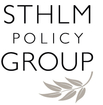Organisational assessment of a global institute for justice against international crimes and human rights violations Apr 20
Sthlm Policy Group · Comments: 0SPG's approach and
methodology for the evaluation was allowed to be shaped by a thorough understanding of
JRR’s theory of change, its ambition to provide relevant, effective, and
efficient services, and its need for a sustainable funding platform. Our
understanding of the organisation was gained through a large number of interviews with JRR management and
staff, board members, trainers, deployed experts and cooperation partners. We
also reviewed documentation on issues that were related to the assessment of
the current organisational structure of JRR and its processes and systems, and
how these enabled JRR to deliver on its mandate.
Our methodology and tools for analysis of available information was framed and influenced by the COSO-framework to improve organisational performance and governance. Each area of analysis: (i) organisational structure; (ii) processes; and (iii) systems, was seen and addressed through the lens of governance and management of a successful organisation. The COSO-framework helped us analyse the key elements of JRR’s governance and strategy. The analysis focused on the management cycle for delivering on the organisation's strategy: planning, implementation, monitoring, and adapting to changing circumstances and identified challenges.
Our analysis of JRR’s management cycle focused on understanding (i) how the management system contributed to achieving the overall strategic objectives, and provided an enabling process for deploying and executing the strategy; (ii) links between processes of strategic planning, risk mitigation, budgeting, forecasting, and resource allocation; (iii) how the processes contributed to making the operations work and deliver expected performance in accordance with the mandate of the organisation; (iv) mechanisms to review and oversee the implementation of JRR against the overall strategic plan, including the level of acceptable external and internal risk; and (v) mechanisms to improve processes to narrow performance gaps related to stakeholders expectations, as well as corrections in response to changes in the external and internal environment that alter assumptions underlying the strategy.

Comments: 0